Safe Grilling: 20 Tips to Prevent Injury
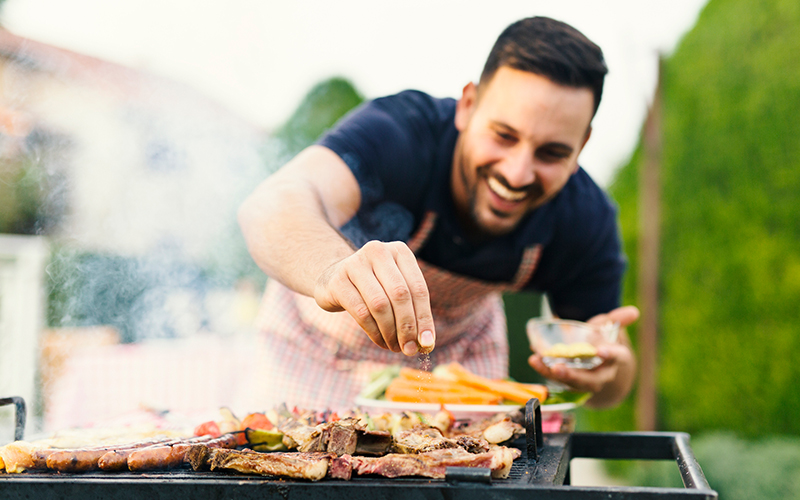
Flipping a row of broiling veggies or sizzling burgers is one of summer's simple pleasures. But there’s danger in the flame, with potential for damage far worse than a charred dinner.
Whether you prefer charcoal or gas, a relaxed attitude around your grill can mean safety is taken for granted. And that casual atmosphere can lead to serious injury.
“On average close to 20,000 patients nationwide visit emergency rooms each year because of injuries involving grills,” said Kevin Omilusik, MD, Munson Healthcare Paul Oliver Memorial Hospital Emergency Department Medical Director. “Nearly half (forty-eight percent) of these injuries are thermal burns from both fire and contact with hot objects.”
But there’s good news: grilling injuries can be easily avoided. These tips will help keep you grilling safely and eating well all summer long.
Charcoal Grill Safety
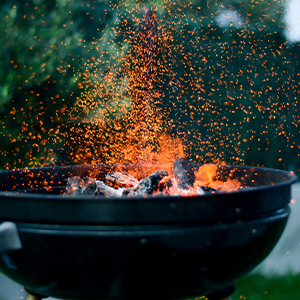
Each year about 20 deaths and 400 emergency-room-treated injuries are reported from charcoal grill Carbon Monoxide poisoning.
Carbon monoxide is a colorless, odorless gas produced by burning charcoal that can be fatal in closed areas. To avoid carbon monoxide poisoning or other injuries, the Consumer Product Safety Commission (CPSC) offers these safety tips when using a charcoal grill:
- Never burn charcoal inside your home, vehicles, tents, or campers.
- Charcoal should never be used indoors, even if you have ventilation.
- Because charcoal produces carbon monoxide until the charcoal is completely extinguished, never store a grill indoors with coals you have just burned.
- Never use gasoline when starting a charcoal fire because gasoline will explode. Use only approved charcoal lighter fluid.
- Cap the starter fluid immediately after using it and store it a safe distance from the grill.
Another common mistake: not using enough starter fluid initially, then risking a fire or explosion by adding more fluid to the hot coals.
And when you’re done cooking, make sure to keep children away if you dump coals out of the grill. Children under five account for an average thirty-nine percent of grill contact injuries. This might be bumping, touching, or falling on some part of the grill or hot coals.
Gas Grill Safety
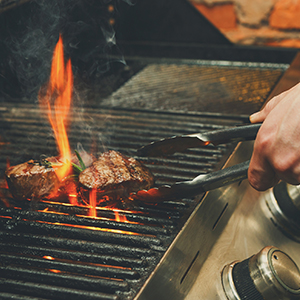
Gas or liquid petroleum gas grills also carry a safety risk. The National Fire Protection Association reports that each year, fire departments respond to an average 9,600 fires related to home grilling, with gas grills accounting for about eighty percent.
Fires and explosions are the main cause of injury because gas and propane are extremely flammable. The CPSC says that most of these fires and explosions occur when a person lights a grill that hasn’t been used for a while, or just after refilling and reattaching the grill’s gas tank.
The agency offers these tips for grilling safely with gas:
- Always check for leaks when you disconnect or reconnect the regulator to the tank. If you find a leak, immediately turn off the gas at the tank and don't attempt to light the grill until the leak is fixed. Until repaired, keep lighted cigarettes, matches, or open flames away.
- Check the valve connections and hoses to be sure they’re in good working order. The hoses should have no cracks, holes, or leaks. Make sure there are no sharp bends in the hose or tubing.
- Check the tubes that lead into the burner for any blockage from insects, spiders, or food grease. Use a pipe cleaner or wire to clear any blockage.
- Replace scratched or nicked connectors, which can eventually leak gas.
-
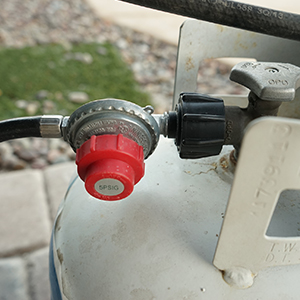
Never attempt to repair the tank valve or the appliance yourself. Trust a gas dealer or a qualified appliance repair person.
- Never use a gas grill indoors or in a garage, carport, porch, or under a surface that can catch fire. Use the grill at least ten feet away from any building.
- Move gas hoses as far away as possible from hot surfaces and dripping hot grease. If you can't move the hoses, install a heat shield to protect them.
- Never start a gas grill with the cover closed.
- If the burner doesn't light, turn off the gas and try again in about five minutes.
- When not in use, the tank valve must be turned to OFF. The tanks should always be stored in an upright position and in a place where the temperature will never reach 125° Fahrenheit or 52° Celsius.
- When the tank is connected, the grill must be stored outdoors in a well-ventilated area.
- Never store a spare gas container under or near the grill. Never store a full container indoors. And never store or use flammable liquids, such as gasoline, near the grill.
- Never keep a filled fuel container in a hot car or car trunk. Heat will cause the gas pressure to increase, causing the relief valve to open and allowing gas to escape.
- Always follow the manufacturer's instructions that accompany the grill.
Burn injury? Know when to call 9-1-1
If you do receive an injury from a gas or charcoal grill, make sure to address it right away. For minor burns, treat at home or call your primary care provider. If you have a severe burn, consider finding an urgent or walk-in clinic nearby.
“First-degree burns involve only the superficial layer of the skin,” said Dr. Omilusik. “A sunburn is an excellent example. The skin remains intact, and there’s no blistering. If pain can be controlled with over-the-counter medications, first-degree burns can be treated at home.”
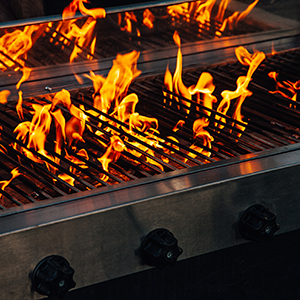
Second-degree burns, also known as partial-thickness burns, extend into the dermal layer beneath the skin’s surface. Blisters are a good indication. Blisters serve as a source of protection for the wound by providing a barrier against bacteria.
“If a second-degree burn is limited to one focal area, it can be treated at home,” Dr. Omilusik added. “Immediately cool the area with water, then treat with an antibiotic ointment and cover with loose gauze. Try not to break any blisters that form.”
Third-degree burns extend through the surface layer of skin, the dermis, and into the muscle tissue itself. Fourth-degree burns extend down to the bone. Surprisingly, these burns are not painful because the nerves are usually damaged. However, they’re often surrounded by second-degree burns, which can hurt.
“If the burn covers a large area of the body it should be evaluated at an urgent care or emergency room,” said Dr. Omilusik. “Pain management and follow-up can be a big part of the treatment. If third- and fourth-degree burns cover a substantial part of the body, they need to be treated in a designated burn center or a hospital with a dedicated burn unit. This is also true if the burns involve the face, hands, or feet.”
Not sure? Ask-a-Nurse
If you do receive a burn and you’re unsure where to seek care, call Munson Healthcare Ask-A-Nurse at 231-935-0951. A registered nurse will address your symptoms at no charge and help direct you to the right place. Our nursing team is here for you 24 hours a day.